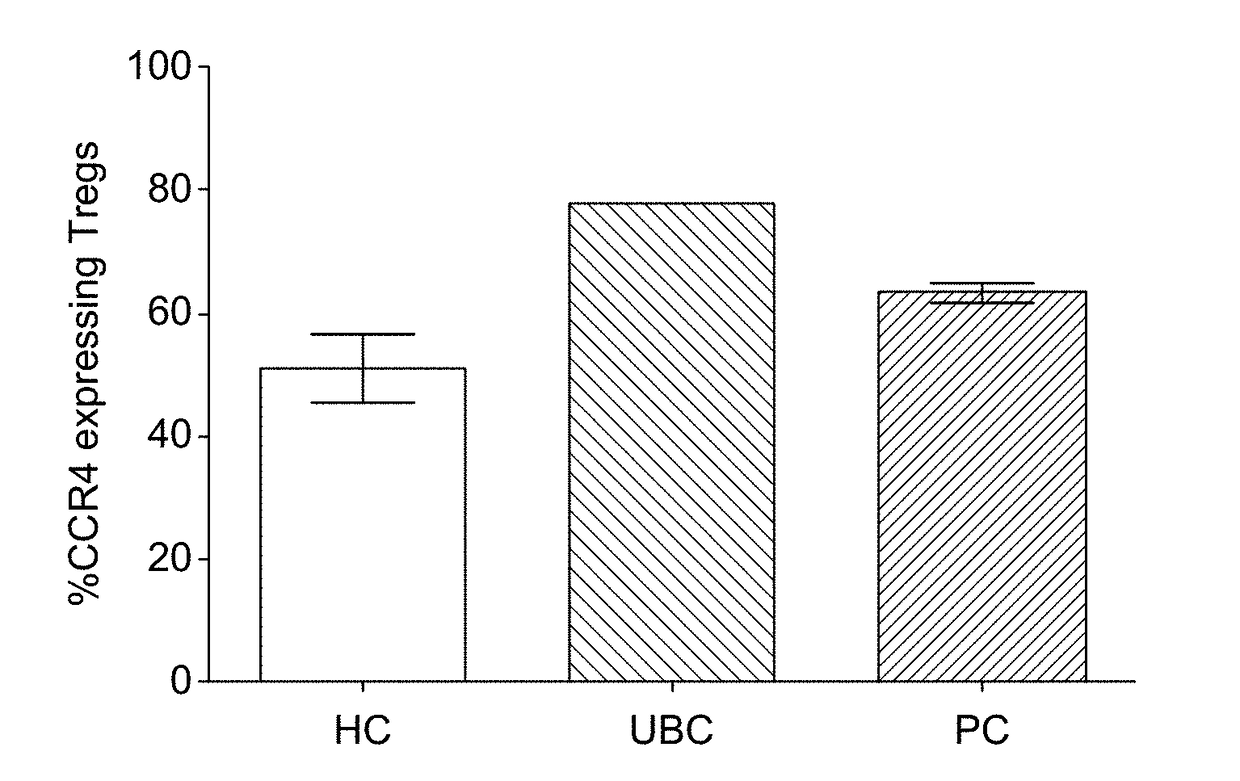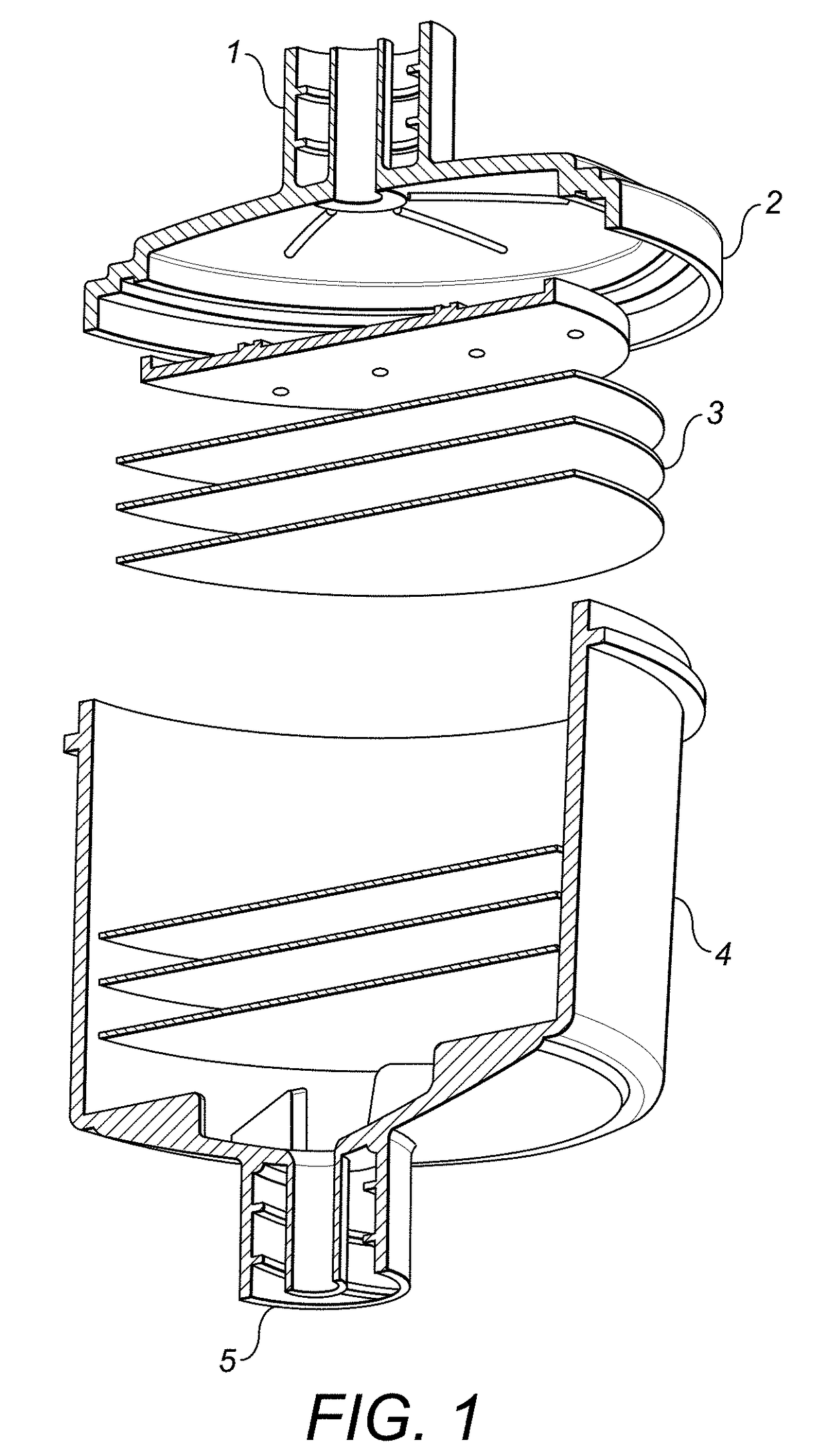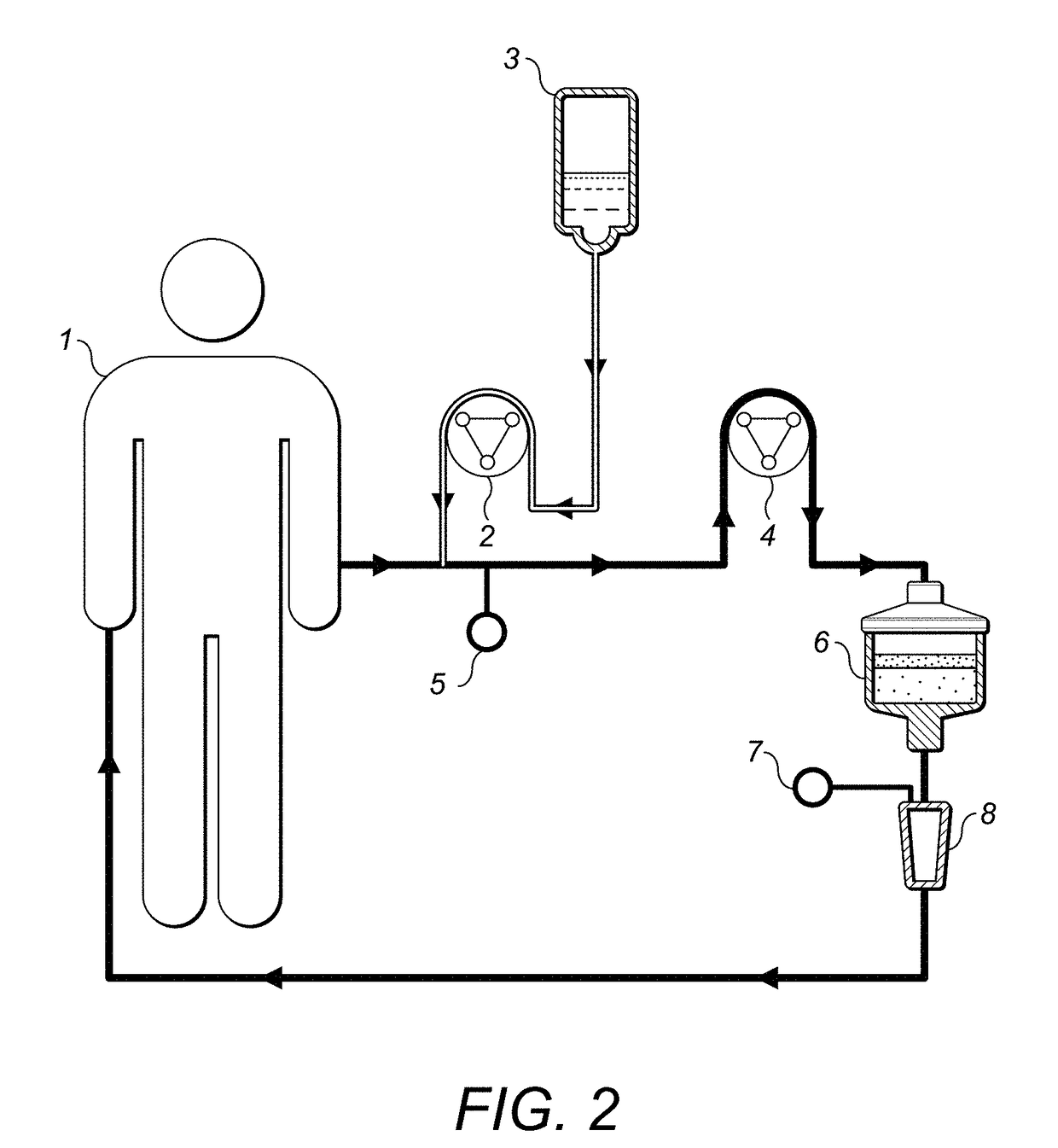Treating cancer
a technology for cancer and products, applied in the field of cancer products and methods, to achieve the effect of reducing the incidence of tumour metastasis, and reducing the levels of circulating tumour cells
- Summary
- Abstract
- Description
- Claims
- Application Information
AI Technical Summary
Benefits of technology
Problems solved by technology
Method used
Image
Examples
example 1
Tailored Leukapheresis
[0235]Column Design and Properties
[0236]Introduction
[0237]Apheresis is an established treatment used for depletion of blood components, such as antibodies, low-density lipoproteins (LDL) and blood cells. Leukapheresis is the apheresis treatment used for removal of white blood cells, leukocytes. The patient is connected to an extracorporeal blood circulating system; the blood is drawn from a vein in one arm, passed through a column device and returned into the other arm of the patient. Side effects of leukapheresis treatments are varying from mild events like headache, dizziness, hypotension, palpitation and flush seen in 0.1 to 5% of treated patients.
[0238]The Column
[0239]The column is intended to be used as a leukapheresis treatment for cancer. It will specifically remove CCR5, CCR6, CCR7, CCR8, CXCR4, CXCR7, CCR4, CCR9, CCR10, CXCR3 and / or CXCR5 -expressing cells, such as tumour cells and leukocytes, such as regulatory T lymphocytes, through the use of a bind...
example 2a
Treatment of Chronic Lymphatic Leukemia (CLL) patient
[0273]Materials and Methods
[0274]1. Flow Cytometric Analysis of Peripheral Blood
[0275]Peripheral blood from patients and healthy controls was collected in heparin tubes. The red blood cells were lysed using Fix Buffer (Phosphate Buffer Saline (PBS) citrate with 4% paraformaldehyde) for four minutes at 37° C. and Lysing buffer (PBS with 10 mM Tris and 160 mM NH4Cl, pH 7.5) for 15 min at 37° C. The cells were washed in PBS with 2% Bovine Growth Serum, incubated with 10% human serum for 15 min at room temperature (RD and stained with antibodies (Table 2) at 4° C. for 30nnin. The cells were analysed by flow cytometry on a FACS Canto flow cytometer with the FACSDiva software (BD Biosciences).
TABLE 2List of antibodies for flow cytometric analysis.AntibodyFluorophoreSupplierCD14FITCBeckman CoulterStreptavidinPE, APCBiolegendCCR7PerCP Cy5.5BiolegendCD16PE Cy7BD BiosciencesCD3V450BD BiosciencesCD19V500BD Biosciences
[0276]2. Chemokine Bindi...
example 2b
Treatment of Cancers Via Removal of CCR4 Expressing Tregs Using Biotinylated-MDC (CCL22)
[0288]Materials and Methods
[0289]1. Flow Cytometric Analysis of Peripheral Blood
[0290]Peripheral blood from patients and healthy controls was collected in heparin tubes. The red blood cells were lysed using Fix Buffer (Phosphate Buffer Saline (PBS) citrate with 4% paraformaldehyde) for four minutes at 37° C. and Lysing buffer (PBS with 10 mM Tris and 160 mM NH4Cl, pH 7.5) for 15 min at 37° C. The cells were washed in PBS with 2% Bovine Growth Serum, incubated with 10% human serum for 15 min at room temperature (RD and stained with antibodies (Table 3) at 4° C. for 30 min. The cells were analysed by flow cytometry on a FACS Canto flow cytometer with the FACSDiva software (BD Biosciences).
TABLE 3List of antibodies for flow cytometric analysis.AntibodyFluorophoreSupplierCCR4PerCP Cy5.5BD BiosciencesCD127PE Cy7BiolegendCD4V500BiolegendCD25APCCy7BiolegendCD3Pacific blueBD BiosciencesStreptavdinPerCpCy...
PUM
 Login to View More
Login to View More Abstract
Description
Claims
Application Information
 Login to View More
Login to View More - R&D
- Intellectual Property
- Life Sciences
- Materials
- Tech Scout
- Unparalleled Data Quality
- Higher Quality Content
- 60% Fewer Hallucinations
Browse by: Latest US Patents, China's latest patents, Technical Efficacy Thesaurus, Application Domain, Technology Topic, Popular Technical Reports.
© 2025 PatSnap. All rights reserved.Legal|Privacy policy|Modern Slavery Act Transparency Statement|Sitemap|About US| Contact US: help@patsnap.com



